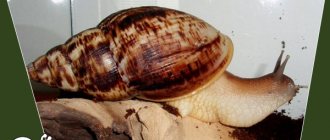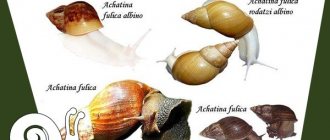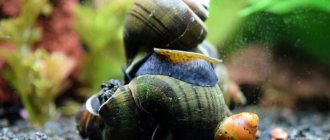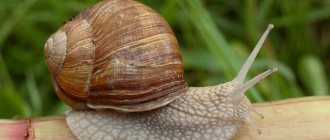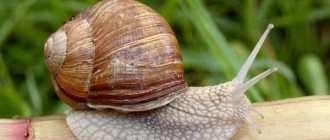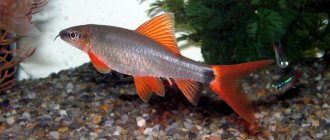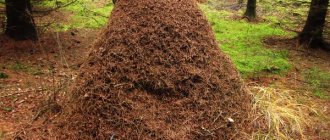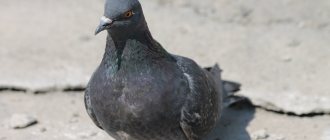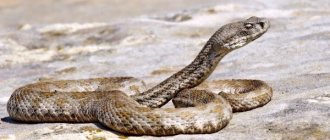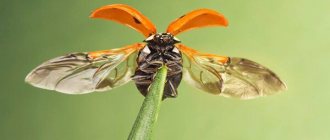Achatina achatina is the largest and most beautiful species of land mollusk. This snail is one of the largest representatives of the Achatinidae family.
Achatina vulgaris reaches a length of approximately 25 cm. The shell is inflated, smooth, orange or yellow in color with bright black dots and stripes. For this shell color, the snails Achatina achatina are called tigers or tiger snails. Up to a year, the shell of the mollusk increases by about 1 cm per month, after a year the growth of Achatina slows down, adding 0.6-0.8 cm every month. The apex is white or light yellow, the columella is blue.
The body of the tiger snail is similar in appearance to the Achatina in skin structure, but it is a little plumper. This type of mollusk is a cross between Achatina and Archatina. For example, in the Achatina tiger, the body ends with a dragon tail, in the form of a V-shaped tuberous appliqué. This unusual tail is not seen on other types of land snails.
The body color of the mollusk can be either deep black, gray, light beige, or snow-white. If an animal is caught in the wild, after several months of being kept at home, the color of the leg becomes lighter.
Where does Achatina live?
The homeland of the large snail is tropical countries with a hot climate. These are Nigeria, Togo, Liberia, Sierra Leone. In these countries, it used to cause enormous damage to crops and native plants. But these days, the number of Achatina tigers has decreased significantly, due to the ruthless deforestation of tropical forests and the collection of snails by the local population for food.
In many regions of Africa, Achatina Achatina is still considered a valuable meat and the most affordable type of protein. And also the largest specimens are exported from Africa to restaurants and snail farms in Japan and Germany. Clam mucin is successfully used in medicine and cosmetology in many countries.
It is not uncommon to find Achatina Achatina in Europe as an unpretentious and exotic pet.
A huge specimen of the tiger snail was discovered in Sierra Leone in 1976; the shell size was 288 mm, the body was 385 mm long, and its weight was 900 grams.
Habitat
The homeland of these land mollusks is the coast of East Africa, where the climate is humid and hot. They are found:
- in southern Ethiopia and Somalia,
- in Tanzania,
- Kenya
- in northern Mozambique.
In the west of the mainland - in Ghana, Liberia and Nigeria. At the end of the 19th century, these snails were smuggled to India and the island of Mauritius. At the beginning of the 20th century, they ended up in Asia in Sri Lanka and Thailand in the same way, and in the second half of the last century they ended up in New Guinea, Britain, Ireland and Tahiti.
Types of Achatina tiger
The color of the shells and body of the snail is varied. The background of the shell varies from light yellow to orange with broken and even stripes, thin and thick lines and blurs of black or brown.
Subspecies Achatina achatina
Achatina achatina Bayoli
In this subspecies, the yellow background occupies approximately 70% of the shell, and there are fewer brown lines than in other subspecies. The body is light, with a clear stripe on the neck.
Achatina achatina Roseolabiata
The main difference from the simple Achatina Achatina is the pink apex. The color of the body is lighter than the standard, with a tint of beige.
Achatina achatina Depravata
The shell is completely yellow, orange or red, without black stripes. Columella is blue or white.
Achatina achatina Monochromatica
The shell is like that of Depravata, smaller in size, the columella is crimson or pink.
Achatina achatina Elegans
Smaller, more elegant than other tigers. The shell is the same color as Achatina Achatina, the stripes are black, thin and even.
Achatina achatina Togensis
The shell is orange or dark yellow, the stripes are thin, zigzag, the columella is white or blue.
Achatina achatina Albino
The shell is yellow with brown stripes. Columella is white or yellow. Leg color is white. About the content of Achatina albinos.
Peculiarities
The snails we are going to talk about are very unusual. They have an exotic appearance and there are many rumors surrounding them. For example, it is generally accepted that in some countries there are strict penalties for keeping these individuals due to the fact that they are omnivorous and can destroy almost all crops. It's fair to say that the rumors are unfounded. Indeed, in some states snails are banned because they are considered pests.
The usual habitat of mysterious creatures is the coast of North Africa. It has a humid and warm climate. They are found mainly in sown fields, forests or swampy areas. Their life requires a temperature of 20 to 25 degrees. If it drops to 3 degrees, the snails experience suspended animation.
These individuals have very beautiful and varied colors. They have a well-developed sense of smell. Their shell may have a reddish, brown, yellow or light yellow pattern. The body, which is in the shell, can be yellowish, dark or light (the shell has mimicry, changes color depending on the color of the surrounding environment), and four tentacles necessarily rise on the head. The short ones are the sensory organ, and the long ones are the eyes. The mollusk has no hearing, but this defect is well compensated by excellent vision and touch.
By the way, with the help of smell, the snail finds food, a partner for mating, and also senses approaching danger. The height of the conical shell is usually approximately twice its width, and consists of 9-11 whorls. Inside the body of the mollusk there are lungs, a heart, kidneys, and even a rudiment of brain tissue. Radula is the teeth of Achatina. They look like a toothed band. The snail breathes through its skin. Vision is very good and allows you to view space at a distance of one centimeter. With the help of vision, illumination is also recognized.
The individuals we describe grow quite quickly. Here is a growth table that will show everything clearly.
| Achatina immaculata\Achatina panther | 1 month – 2 cm | 2 months – 4 cm | 3 months – 6 cm | 4 months – 10 cm |
| Achatina fulica | 1 month – 2+ cm | 2 months – 4+ cm | 3 months – 6+ cm | 4 months – 10+ cm completes growth by year |
| Achatina reticulata | 1 month – 3+ cm | 2 months – 7+ cm | 3 months – 10+ cm | 4 months – 14+ cm completes growth by year |
| Archachatina marginata ovum\suturalis | 1 month – 2-3 cm | 2 months – 4-5 cm | 3 months – 6-7 cm | 4 months – 8-9 cm 5 months 10+ cm |
What and how to keep Achatina Achatina
At home, the mollusk is kept in a terrarium, aquarium or plastic container, which should be 3-5 times larger than an adult snail. Tigers are large mollusks, so give preference to horizontal terrariums with a large bottom area. The volume of the container to contain it must be at least 25 liters.
Achatina Achatina feels great at a temperature of 26-29 degrees. If your pet is active at 26 degrees and eats well, then there is no need to increase the temperature in the terrarium, but if you notice that the snail is not eating well and sleeps more, feel free to increase the temperature a couple of degrees. An incandescent lamp or thermal cord will help you do this. How to keep small Achatina.
Don't forget about humidity either. The optimal humidity for keeping tigers is 85%. This type of Achatina loves it when it is humid and warm. And since such living conditions are liked not only by snails, but also by midges, bacteria and mold. Proper ventilation should be taken care of.
Ventilation in the terrarium
So that the air circulates and does not stagnate in the terrarium. You need to make 4-5 holes on one wall (the number of holes depends on the size of the container), closer to the lid. Then the same amount on the opposite wall, only near the ground. If you notice that the soil is drying out quickly, seal a few holes. You can find holes in the lid of the container on the Internet, but this is not correct, since there is no air circulation.
Soil for Achatina tiger
At the bottom of the terrarium, place peat or coconut substrate with a layer of dried leaves or moss, etc. The soil should be about 1/3 of the aquarium. They burrow and sleep in it during the day; the soil also helps maintain the necessary humidity, but do not allow dirt and waterlogging. Spray it and the walls of the terrarium no more than 1-2 times a day. Review article on choosing soil for a snail.
Tigers are sensitive to the ground, do not replace it completely, they may refuse to descend on it. Always add fresh soil gradually.
Coconut substrate , a common and convenient type of soil. It holds moisture well and does not stain the walls of the terrarium. Snails love to burrow into it and rest after a hearty lunch.
Moss is considered a must if you keep Achatina Achatina. Sphagnum and forest moss retain moisture well and, with proper care, do not require frequent replacement.
High-moor peat or clean soil is also often used as soil. Just make sure that the soil does not contain fertilizers and pesticides.
Prohibited soils
Sand scratches the snail shell and the walls of the terrarium, clogs the digestive tract of the mollusk, and sand does not hold moisture well and clumps into clumps.
The sawdust scratches the snail's body, leaving small splinters in it that become inflamed and fester. Also, sawdust does not retain moisture, quickly acidifies and can cause a white coating on the shell of a mollusk.
Stones are not used, as they do not retain moisture, scratch the shell and body of the Achatina, and if it falls from the lid of the terrarium, the snail can break and die.
Achatina Achatina gets used to certain conditions of detention and reacts negatively even to small changes. Therefore, introduce innovations gradually so that your pets do not become stressed by refusing food until they hibernate.
Equip the tiger terrarium with driftwood, a shelter house and a container of water.
Mollusks often burrow into the ground under driftwood to rest during the day. For this purpose, you can place halves of a coconut shell or shards of a flower pot in the terrarium, which will serve as an interesting decoration and shelter for the tiger snail.
Achatina vulgaris naturally lives in hot and humid climates, so to artificially increase the humidity in the terrarium, place a container of water or a small swimming pool. The snail loves to “soak” its tail in warm water after a full meal.
general description
The shell of neretinas has thick smooth walls, ovoid, hemispherical in shape, striped like a zebra. Foot with an oval sole. The soft gray body is almost completely hidden in the shell.
The size of the mollusks is small 2 cm, maximum 2.5 cm
The lid (operculum) is small, so it does not completely cover the entrance; its growth occurs only on one side. The head is elongated, oval with thread-like tentacles. The eyes are raised on tubercles. The size of the mollusks is small, 2 cm, maximum 2.5 cm. The hole in the mouth is not located in the center.
Appearance
Neretina snails are distinguished by the individual coloring of their horny cover. Among snails of this species, there are practically no two individuals of the same color. The predominant mollusks are dark brown, olive, dark green, but there are snails of black and reddish-orange tones. The shell has a pattern of lines, stripes, specks, dots of various shapes, and spiky formations often appear. The head and folds of the mantle are usually gray, brownish or black, sometimes with a dark dotted pattern.
Distribution area in nature
Neretinas naturally live in water bodies of South Africa and Southeast Asia.
Habitat
They are found in ponds, rivers, lakes and reservoirs with brackish, fresh and salt water. They stay on the bottom, covered with stones and strewn with snags, branches and overgrown with aquatic vegetation, and can live in fresh water.
Lifespan
Neretina in nature do not live long, 1-2 years. These gastropods in the food chain are consumers of algae, and themselves serve as food for fish and mammals.
Found in ponds, rivers, lakes and reservoirs with brackish, fresh and salt water
They live in captivity for a short time. They do not tolerate transportation and changing the aquarium well. Mollusks are especially sensitive to hypothermia during movement. Snails often die immediately after delivery from the pet store, so after settling, gastropods are checked more often and dead individuals are removed to avoid contamination of the tank and the appearance of an unpleasant odor.
What and how to feed Achatina Achatina
The snail is not picky when it comes to food; it eats whatever it is given. Loves vegetables and fruits, greens and herbs. Loves apples, pears, mushrooms, pumpkin, cabbage and lettuce.
Don't forget about calcium supplements. It needs calcium to build a proper and strong shell.
Sources of calcium
- feed chalk;
- shell rock;
- sepia, if salted, soak in water for 5-6 hours;
- blue clay;
- eggshells - grind into fine powder.
Calcium should be given in unlimited quantities.
Up to a year, the mollusk grows actively and eats a lot. At home, it is recommended to give cauliflower, cucumber, tomato, zucchini, dandelion leaves and other herbs, except citrus fruits.
The Achatina tiger needs protein food, but protein of plant origin should predominate in the daily diet. These are different grain mixtures, compound feed with calcium grinding. Dried herbs and nuts.
Animal protein source
- gammarus;
- daphnia;
- bone flour;
- fish food.
You can give 2-3 times a week 1/2 spoon. You need to be careful with animal protein, as snails eat it with pleasure and do not know when to stop. And an overdose leads to protein poisoning in the flesh, leading to the death of your pet.
Table salt, sugar, citrus fruits, spicy and sour foods are prohibited foods for snails.
To feed snails, use a plastic bowl or plastic lid. It is not recommended to place food on the ground, as uneaten food remains quickly rot and mold. An unpleasant odor appears, flies and parasites appear. Therefore, remove leftover food daily. Read about how to deal with midges in a terrarium here.
Content
photo can be enlarged
Containing neretin is quite simple. They are very unpretentious and adapt to a wide range of water parameters. Since this is a tropical species, the water should be quite warm - 24-27C. Acidity is about 7.5, hard or medium hard water is better, all snails do not tolerate soft water well. If you have soft water, then you need to increase the water hardness in the aquarium so that the snails can form a shell normally.
As with fish, you need to monitor the level of ammonia and nitrates in the water, since neretina are sensitive to them. It is advisable to change up to 30% of the water with fresh water weekly. Do not forget that treating fish with preparations containing copper can be fatal for snails, including neretina!
It is important how you introduce neretin into the aquarium. Avoid simply throwing them into the water and letting them fall to the bottom as they please. The fact is, some snails will fall upside down, but for neretina it is extremely difficult to turn over on their own and they may even die. So gently lowering them to their normal position is a good start.
It is important to introduce Neretina snails into a balanced and established home aquarium with plenty of plants. In such an aquarium, the water parameters are stable, and adaptation will be faster. And the plants will give the snails food at the initial stage; they will be able to eat the rotting parts. In addition, such an aquarium already contains algae, the main part of the neretina’s nutrition.
Neretin can be kept with any peaceful fish and invertebrates. By themselves, they are completely harmless and do not harm anyone, but they can become victims of large fish or fish that feed on snails, such as tetradon.
What to feed little Achatina Achatina
At home, little tigers are given lettuce leaves, grated zucchini, cabbage and peas. Apples, pears, watermelon and melon, pureed daphnia, bone meal and always calcium in large quantities: eggshells, food chalk, shell rock, etc. Pamper your little ones with nutritious treats made by yourself.
Sweet, salty and smoked foods are strictly prohibited.
Give your little Achatina ground mixtures of cereals, nuts and seeds every day. You can feed your babies boiled crumbly porridge without salt every few days, adding ground calcium and bone meal to it.
Newborns Achatina achatina need to be fed from 2-3 days with grated vegetables and fruits, just a little, so that the food does not rot and the babies eat everything. Avoid sticky cereals, bananas and citrus fruits.
After eating, the mollusks burrow into the ground or hide under driftwood or artificial shelter, where they can sleep for one to two days. Tigers grow in their sleep. They live in captivity from 5 to 7 years.
Diseases
photo can be enlarged
All snail diseases occur from improper care and poor feeding. If you control the temperature, hardness and acidity of the water, then most deviations can be avoided, for example, shell flaking.
Cracks and chips in the shell can heal if the snail is provided with complete rest and the diet is filled with plenty of calcium. A white coating on the shell indicates the aging of the snail.
A plaque similar to mold can be caused by fungal infections; in this case, it is necessary to place the snail in a separate tank and take baths with salt or potassium permanganate. For prevention purposes, all new individuals must be placed in separate quarantine and monitored for health.
Reproduction of Achatina Tiger
The clutch can contain from 30 to 300 eggs, which are 8.0 - 8.7 long and 5.5 - 7.0 mm wide. Usually all eggs in a clutch are viable.
Achatina аchatina – hermaphrodite; Each snail has testes and ovaries. Achatina begins to reproduce when it grows to a certain size and age. Read more about the reproduction of Achatina. However, they grow slowly, becoming sexually mature after two and sometimes three years. Tigers are reluctant to breed in captivity, which is why they are expensive. But the better the maintenance, the faster the waiting period for offspring decreases.
Mollusks mate unilaterally. The role of the female goes to the larger Achatina. The mating process lasts about two hours. The resulting sperm is enough for several clutches and is stored in the snail’s body for up to several years.
average price
Neretina are sold in special stores that sell marine life. The price for 1 copy is set at about 110 rubles. You can buy snails at a lower price from hobbyists who exchange shellfish and offer their services on various websites. Such a product is also available at “bird markets,” but when purchasing, you need to carefully examine the appearance, observe the behavior, and you should not choose individuals lying on the bottom. There are cases when beginners bought empty shells. If you're lucky, some hobbyists simply give away the shellfish to reduce the number of inhabitants in the aquarium.
Tiger snail behavior
They are more active at night. The mollusks spend the daytime in secluded places, burrows, burrowing into the ground under snags or artificial shelter. Each snail has its own permanent resting place, hiding in it every time after eating.
Young tigers are active and mobile, when frightened they squeak loudly and produce a lot of foaming mucus as a defensive reaction.
Under poor conditions, replacement of soil, and failure to maintain temperature conditions, the African snail easily hibernates.
The tiger's character is calm. It is believed that this is the laziest land snail, it takes a long time to get used to new conditions, sleeps and eats a lot. He crawls around the terrarium a little, often sits in one place, decorously raising his head and looking at everything and everyone around him.
Peculiarities in behavior
- soil layer more than 10 cm;
- stressed from moving to a new terrarium;
- stressed by changes in soil and diet;
- do not tolerate proximity to other species of Achatina, except tigers;
- love to live in pairs;
- can sleep for more than two days.
Compatibility
Neretina snails never show any hostility towards other inhabitants of an artificial reservoir. But they themselves can become easy prey for predatory and omnivorous fish and shrimp. They also do not get along well with other types of mollusks and crayfish.
They will wage war with Ampularia, Achatina, Phys, and Coils for the territory of eating algae. And they get along well with bivalves or Melania.
It is strictly forbidden to put them into the same body of water with cichlids, macropods, tetradons, golden cockerels, and large catfish species.
Achatina Achatina in cooking
Snails have been eaten since time immemorial. The ancient Greeks and Egyptians highly valued snail meat for its nutritional value and taste. During World War II, snail meat was used as food for Japanese and American soldiers. Therefore, after the end of the war, the Japanese began to grow shellfish on special snail farms. Their meat was very popular in the post-war period. Without losing its gastronomic value even today.
In Africa and some cities in Brazil, the Achatina tiger is used for religious purposes, as an expensive offering to the great deity Oxala. In Sierra Leone and other African cities, Achatina is revered not only as an expensive offering to the gods, but also as easily accessible food. All inhabitants of Africa consume land molluscs as food.
Feeding
photo can be enlarged
Neretins are the best destroyers of all kinds of algae. These active snails are constantly on the move, leaving a clean trail behind them. Mollusks do not harm aquarium plants, but they cannot get rid of all algae. Since algae appears as a result of an imbalance in the aquarium, this problem must be solved first.
In addition to their favorite foods, neretinas should be given cereal flakes and an algae called spirulina. While consuming food, the snail constantly crawls from place to place, and then can freeze for a long time. Do not panic ahead of time, thinking that your pet has died. You need to smell the neretina, because a dead snail has an unpleasant odor.
